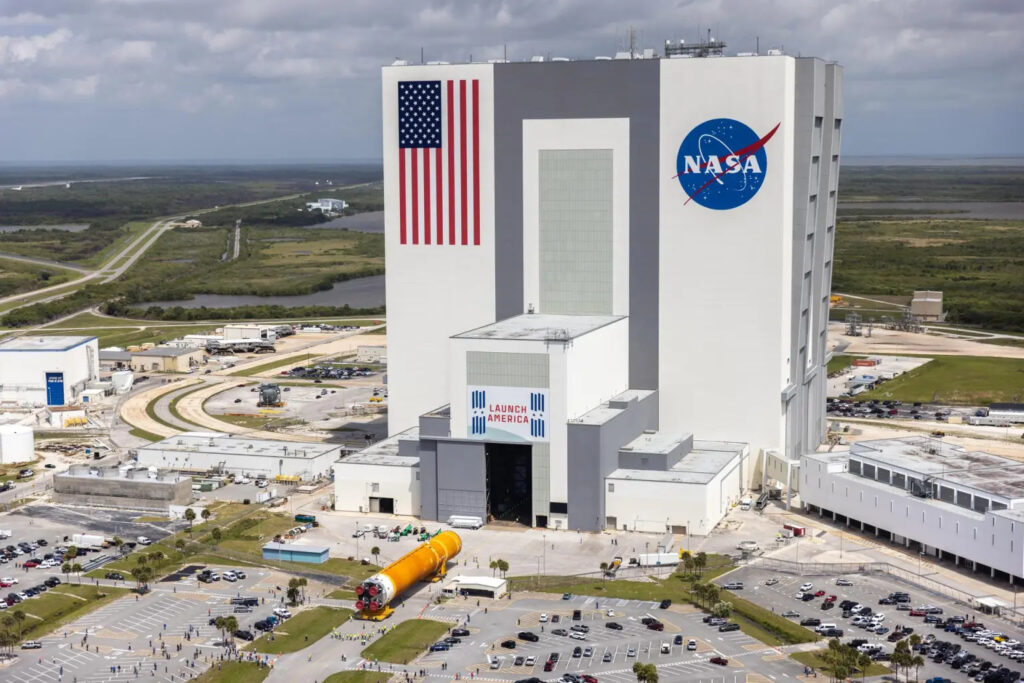The National Aeronautics and Space Administration (NASA), an independent agency of the U.S. federal government, leads the country’s civil space program, aeronautics research, and space exploration efforts. Founded in 1958, NASA succeeded the National Advisory Committee for Aeronautics (NACA) to drive America’s space exploration initiatives, focusing on peaceful applications of space science. Over the decades, NASA has spearheaded numerous pioneering missions, including Project Mercury, Project Gemini, the Apollo Moon landings (1968–1972), Skylab, and the Space Shuttle program.
Today, NASA remains at the forefront of space exploration and technological advancements, supporting programs such as the International Space Station (ISS) and the Commercial Crew Program. NASA also oversees the development of the Orion spacecraft and the Space Launch System (SLS) for the lunar Artemis program.

Let’s dive deep into the top 10 unknown and amazing facts about NASA, uncovering the lesser-celebrated aspects of its journey through space and science.
Table of Contents
Toggle1. NASA Wasn’t Initially Focused on Space Exploration
When NASA was created in 1958, its primary focus wasn’t space exploration. NASA evolved from an earlier agency known as the National Advisory Committee for Aeronautics (NACA), which had been established in 1915 to manage the United States’ research and development in aviation. NACA’s work focused on improving aircraft, engines, and flight performance. When NASA was formed, its primary mission was to surpass the Soviet Union in the ongoing space race. Though NASA is now synonymous with space missions, its roots are firmly grounded in aviation research.
NASA’s Aviation Impact Today: Even though space exploration became NASA’s focus, the agency still plays a critical role in aviation research today. From designing more fuel-efficient airplanes to exploring supersonic travel, NASA continues to innovate in the aviation sector, contributing to safer and more sustainable air travel.
2. NASA’s Viking Mission Found Life on Mars (Sort Of)
In the 1970s, NASA’s Viking missions became the first U.S. spacecraft to land on Mars. The primary goal of these missions was to explore the Martian surface and search for signs of life. One of the Viking landers conducted an experiment called the Labeled Release (LR) to detect microbial life. The LR experiment yielded results that some scientists interpreted as signs of biological activity.
The Controversy: While NASA concluded that the findings were inconclusive due to non-biological chemical reactions, the debate continues to this day. Some researchers believe that Viking might have detected life, but the technology available in the 1970s wasn’t advanced enough to definitively identify it. As technology has evolved, some are advocating for revisiting Mars with more sophisticated tools to confirm or deny these findings.
3. NASA Patented a Food-Flavored Space Drink
Most people associate NASA with space shuttles, rovers, and telescopes, but did you know NASA once played a role in creating a food-flavored drink? Tang, a powdered orange-flavored drink, became a household name after being used by NASA astronauts during the Gemini missions in the 1960s. Although NASA didn’t invent Tang (it was created by General Foods), its association with space missions catapulted it into popular culture.
The Purpose of Tang in Space: NASA used Tang to mask the taste of water in space, which often developed a metallic flavor due to the water filtration systems aboard the spacecraft. Tang provided astronauts with a flavorful and nutritious alternative to the bland water they would otherwise consume.
4. NASA Spent Decades Designing Space Pens (Or Did It?)
One of the more famous myths surrounding NASA is the story of the “Space Pen.” According to the myth, NASA spent millions of dollars developing a pen that could work in zero gravity, while the Soviet Union simply used pencils. However, the truth is more nuanced.
The Real Story: NASA did initially use pencils, but pencils posed a risk in the spacecraft environment. The graphite shavings from pencils are conductive and could potentially cause short circuits in electronic systems. Additionally, broken pencil leads could float around the spacecraft, creating safety hazards. NASA eventually adopted a pen developed by the Fisher Pen Company, known as the Fisher Space Pen. This pen, which works in zero gravity, extreme temperatures, and even underwater, was developed independently by the company without NASA’s funding.
5. NASA Recycled Apollo Spacesuits for the Space Shuttle Program
The iconic spacesuits worn by the Apollo astronauts were highly advanced for their time, offering life support and protection against the harsh environment of space. However, NASA did not abandon these spacesuits after the Apollo missions ended. Instead, they were repurposed and modified for use in the early Space Shuttle program.
Modifications for Shuttle Missions: The Apollo suits underwent significant modifications to make them suitable for the shuttle’s specific needs. This repurposing of suits helped NASA save both time and resources during the transition from the Apollo program to the Space Shuttle era. Though new spacesuit designs have been introduced since then, this period marked a creative re-use of existing technology to meet new challenges.

6. NASA’s Environmental Influence: Tracking Climate Change
Most people associate NASA with space exploration, but the agency plays a crucial role in Earth science as well, particularly in climate monitoring. Through its fleet of Earth-observing satellites, NASA tracks changes in the Earth’s atmosphere, oceans, and landmasses, providing invaluable data for climate scientists.
Notable Climate Contributions: NASA’s Earth Observing System (EOS), launched in the 1990s, revolutionized how scientists study climate change. NASA satellites monitor sea-level rise, ice sheet melting, and atmospheric composition, offering critical insights into the global effects of climate change. The data collected by NASA continues to inform international climate policies and initiatives, underscoring its influence beyond space exploration.
7. NASA Helped Invent Memory Foam
If you’ve ever enjoyed a good night’s sleep on a memory foam mattress, you can thank NASA. In the 1960s, NASA partnered with engineers to develop a material that would improve seat cushions and crash protection for pilots and astronauts. The result was a viscoelastic material that could conform to the shape of the user while evenly distributing weight.
Commercial Success: Though memory foam was initially developed for space missions, it found its way into consumer products like mattresses, pillows, and shoe insoles. Today, memory foam is a multi-billion-dollar industry, and it all started with NASA’s efforts to improve safety and comfort for astronauts.
8. NASA Has a “Batcave” for Spacecraft Repairs
While NASA might not have a secret underground lair like Batman, it does have an extraordinary repair and testing facility known as the Neutral Buoyancy Laboratory (NBL). Located at the Johnson Space Center in Houston, the NBL is an enormous swimming pool that simulates the weightlessness of space, allowing astronauts to practice repairs on spacecraft and equipment in a zero-gravity environment.
The Importance of NBL: In this pool, astronauts train for spacewalks, practice assembling spacecraft components, and rehearse complex repairs. The facility has proven essential in preparing astronauts for real-life space missions, as it mimics the conditions they will encounter in orbit, ensuring they are well-prepared for the challenges ahead.
9. NASA’s Budget Is Less Than You Might Think
One of the most persistent misconceptions about NASA is that it consumes a vast portion of the U.S. federal budget. In reality, NASA’s budget has historically been quite modest. At the height of the space race during the Apollo program, NASA’s budget peaked at approximately 4.4% of the federal budget. However, today, NASA’s budget hovers around 0.5% of the federal budget, despite the agency’s numerous high-profile projects and missions.
What NASA Achieves on a Small Budget: NASA’s ability to achieve significant breakthroughs in space exploration with a relatively small budget is nothing short of remarkable. The agency operates efficiently, making strategic decisions to maximize the value of taxpayer dollars while continuing to push the boundaries of scientific knowledge and technological innovation.
10. NASA Has a Space Garden
As humanity prepares for long-duration space missions, such as a mission to Mars, the ability to grow food in space becomes increasingly important. NASA’s Veggie program, launched in 2014, allows astronauts aboard the International Space Station (ISS) to grow fresh vegetables in space. Lettuce was the first vegetable successfully grown and eaten aboard the ISS.
Why Space Gardening Matters: Growing food in space has several benefits. It provides astronauts with fresh, nutritious food, reducing the need to rely solely on pre-packaged meals. Furthermore, it supports long-term sustainability in space exploration, as astronauts will need to produce their own food on extended missions. Space gardening also helps scientists understand how plants grow in microgravity, paving the way for potential agricultural advancements here on Earth.

